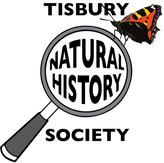|
Bob Gibbons gave us a marvellous talk last week, illustrated with his own spectacular photographs of some of the fascinating species found in Purbeck. Explaining that a great percentage of the area is subject to national and international designations because of the habitats and wildlife found there, he suggested that it is possibly the most wildlife rich area in the UK if not Europe.
The appellation “Island” is thought to have come from earlier times when the marshes of the Piddle and Frome valleys to the northwest combined with Poole harbour to partially cut the area off. Of particular value is the way the mosaic of habitats grade into each other over large areas without hard boundaries. Another factor which explains the great diversity of species is the poor quality of the soil – either inherently poor podzols of the heaths or the chalk and limestone soils which have been impoverished by centuries of grazing. These poor soils made agriculture difficult which held back development as did the “Island’s” status as a hunting forest and this allowed wildlife to survive into the present era. As a result of an unusually complex underlying geology the area holds many habitats within a relatively small area: heaths, bogs, chalk downs, limestone grassland, Poole Harbour and its islands, commons, coastal cliffs, and dunes. The only thing in short supply is natural broad-leafed woodland. Another crucial reason for Purbeck’s uniqueness is its position in the centre of our south coast where it enjoys lots of sunshine. It is as sunny as areas further east and warms up in spring as quickly as areas further to west. This seems to result in it being in a “sweet spot” which has produced an amazing assemblage of species, including many on the edge of their range. As a result, in Purbeck you may find species more usually seen in Cornwall alongside others more usually seen in Sussex, and it is a stronghold for many species, particularly insects. I suspect many who enjoyed Bob’s talk and photos will be planning a visit to Purbeck this summer. The Society is planning a trip to Tyneham in July. Andrew Graham Comments are closed.
|
Photo: Avocets (Izzy Fry)
The headers display photos taken by our members. Do get in touch via the Contact Form if you'd like to submit a photo for selection.
Archives
May 2024
Categories
All
|

 RSS Feed
RSS Feed